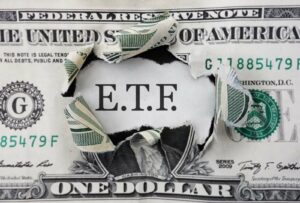By Emilee Klein & Tiffany Zheng
Updated 7 January 2022 with Q4 2021 data
Speaker of the House Nancy Pelosi and venture capitalist husband Paul Pelosi beat the stock market by 5 percent in 2019 and by 14% in 2020. Based on the stocks purchased and disclosed from 2019 through Q4 2021, her portfolio grew 96% over that time, gaining $62 million in value. And that’s not including the $2.8 million made from options trading.
Why it matters
Congress members’ investments are always under scrutiny, but few individuals have received more criticism in the past decade than Nancy Pelosi. Since 2008, Paul Pelosi’s financial moves have made headlines due to his successful and conveniently timed investments, raising concern over whether political officials financially benefit from insider information on bills and laws.
Pelosi’s Assets are Concentrated in Real Estate and Riskier Equity Investments
Besides the half of Pelosi’s assets that fall under stocks and equity, the remaining plurality of the portfolio, 46 percent, comprises real estate properties in California. These include two commercial buildings in San Francisco each valued at around $5 million, a residential community Russell Ranch in Sacramento valued at between $5 million and $25 million and a vineyard in Jurupa Valley, California estimated to be worth over $8 million.
Many of the Pelosis’ investments, however, are Big Tech stocks and call options. Call options are often riskier than stocks since they only make money on the change in stock price within a certain number of days; if the stock does well for six days but plummets on the last day of the call, the net loss can be extreme.
Less than half a percent of Pelosi’s assets are cash. There are no bonds listed on both Nancy’s 2019 disclosure form and 2020-2021 periodic disclosure; cash and bonds are usually safer investments in comparison with stock.

Breakdown of Investments by Sector
Of the $50.5 million invested in public stocks, the Pelosis made most bets in Big Tech and financial services companies. $22 million and $8 million go into the Information Technology and Telecommunications sectors, respectively. These primarily mega-cap and large-cap companies include Apple, AT&T, Facebook, Salesforce, Netflix, Amazon, and more. Apple, in particular, is her most valuable public market asset, at an estimated $18 million reported. Our estimate on market returns on Apple alone indicate a growth of 316%, or an additional $47.5 million since 2019. Within financial services, Pelosi holds the most money—around $15 million—in Visa Inc, along with smaller firms such as Morningstar. Similarly, her Visa stocks have grown 70% over this time, increasing her asset value by $10.5 million.
On the other hand, when it comes to her $24.7 million privately held stocks, Pelosi tends to invest in consumer discretionary companies, financial services, and real estate. The several LLCs that Paul Pelosi is partnered with comprise $19 million in consumer goods and services, primarily in the food and tourism industry. The remaining $5.7 million gets distributed between real estate companies and financial services, including Paul’s own real estate firm Financial Leasing Services. With less than $40,000 held in private tech companies, this contrast between private and public holdings highlights a strong, deliberate interest in Big Tech, rather than smaller companies in the industry.
Pelosi Makes Substantial Gains from Options Trading
Much of Pelosi’s public equity comes from options trading. In her 2019 disclosure, she reported around $7.1 million worth in options. In a recent periodic transaction disclosure, Pelosi lists purchases with nine different large and mega cap firms, including Amazon, Tesla, Disney, and other Big Tech and financial services companies. These transactions come at a time during the pandemic where these companies’ products (such as social media and streaming services) are thriving. Accordingly, all nine company stock prices have since risen from the date of purchase.
Pelosi’s trading behavior indicates that she and her husband engage in a fair amount of selling covered calls, often at the time of stock purchases, a tactic often used as a means for price protection. For example, on Jan. 16, 2020, Pelosi sold between $500,000 and $1 million in Amazon call options, and then on the same day, purchased between $1-5 million in Amazon stocks.
She also gains far more exposure to company stocks through her frequent use of call options than the general public would expect. In May of 2020, Pelosi purchased 20 Amazon call options with a strike price of $3,000 and an expiration date of Jun 17, 2022. Since that purchase, Pelosi has made at least $1.7 million on the options (see Methodology section for calculations).
In order to have made this same profit in stocks, Pelosi would have had to pay around $4.8 million for 2,000 shares, compared to the estimated $750,000 that she paid through options. In other words, getting the same exposure in stocks would have required over six times the amount of money that she actually spent. Pelosi, thus, has much more exposure to large-cap company stocks in Big Tech and finance than her disclosures might initially appear to indicate.

Companies Pelosi Holds with Greatest Stock-Equivalent Exposure through Options since 2019
The graphic above illustrates the five companies the Pelosis hold options in that have generated the greatest equivalent exposure through options compared to stocks. Through their most recent options purchases alone in the five listed companies along with Tesla, Paypal, Disney, and Nvidia, they have gained at least $1.2 million. Tesla, PayPal, and Disney generated equivalent exposure through options by investing less than half the amount needed in stocks.
In Q4 Pelosi only traded in options and asset-back securities, purchasing additional call options in Google, Salesforce, and Disney as well as new call options for Roblox and Micron Technology in December.
Pelosi’s Public Stocks Have Grown Substantially
We estimate that the Pelosis’ public stock portfolio has grown by almost $62 million over three years. Their 2019 public stock investments have an average 105 percent return (ROI), with 18 out of 28 listed stocks exceeding 50 percent ROI. In fact, all but two of Pelosi’s stock holdings from 2019 match or exceed the S&P 500 average ROI, which is around 10 percent per year.
Specifically, Square Inc., Clean Energies Fuel Corp and Apple Inc. have all crossed the 300 percent ROI mark. Apple Inc. stock makes up the largest portion of Pelosi’s adjusted public portfolio, at a weighted return of 60 percent and almost $38 million in profit. Morningstar Inc., QUALCOMM Incorporated and Facebook Inc. also have high ROI, each passing 100 percent. These stocks, however, make up less than 3 percent of the portfolio.
Even more notable is that despite the disruption caused by the pandemic since 2020, only one of her holdings, Interactive Brokers Group, had a negative return, decreasing about 25 percent in value during the pandemic. The Pelosis, however, kept some of the Interactive Brokers Group stock, which eventually recovered and ultimately resulted in a 14 percent ROI.
Does Pelosi Beat the Stock Market?
A study in 2011 showed that Congress members beat the stock market by 6% a year, but a recent study from researchers at Dartmouth shows that after the Stop Trading on Congressional Knowledge, or STOCK Act was passed in 2012 to curb insider trading their success rate regarding stock picks became conditional on other factors. That said, many members did well stock picking around the time COVID-19 caused the United States to go into lock down. Perhaps unsurprisingly, the Pelosis were among them.
In 2019 all of the stocks the Pelosis bought were options or asset-backed securities with 7 transactions total. While their overall portfolio only beat the market in 2019 by 4.9%, her total returns were 33.6%. During 2020 half of their 35 purchases were in individual stocks and while the 29.5% return was less than in 2019, they beat the market by over 14%. Throughout 2021 the Pelosis made 19 stock purchases, 4 of which were individual stocks, Apple, Microsoft, NVIDIA, and AllianceBernstein Holding L.P. Their remaining 15 trades were in call options. Although their portfolio had done well relative to the market through Q3 2021, in Q4 their returns diverged and by year end their total portfolio returns were 13% compared to 29% for the S&P 500.

Visa’s IPO Insider Information Controversy
In 2008, Pelosi bought $220,000 worth of Visa IPO just as Congress was examining a piece of legislation that affected credit card holders. The stock went up $20 a share within a couple of days. When “60 Minutes” reporters questioned Pelosi on her husband’s purchase of Visa, she denied allegations of acting on a favorable investment. The incident caused enough controversy to prompt a special addition to the STOCK Act, called the “Pelosi Provision,” which prohibited Congress members, executive officers and politicians’ staff from investing in IPOs.
Even Pelosi’s Recent Periodic Disclosures Have Come under Scrutiny
Pelosi regularly makes substantial purchases in mega-cap tech companies, including Alphabet, Apple, and Amazon within the last 3 months. She exercised 40 call options at a strike price of $1,200 in Alphabet Inc. on June 18th. With the current stock price sitting at over $2,725, she and her husband have gained over $6 million from this transaction alone.
While the June 18th expiration date for her call options necessitated the purchase, timing concludes that Pelosi is profiting from the companies that she and her colleagues are supposedly working to regulate. The House Judiciary Committee had just approved six antitrust bills to enter the House floor, bills aimed at regulating the sweeping power of the very same Big Tech companies that Pelosi holds massive financial stake in.
Paul Pelosi also bought around $10 million in Microsoft call options on March 19th of this year, and the stock price has since then risen by almost 25%. Pelosi purchased these options when the U.S. Army was actively testing the company’s AI Headset Technology, and a few days after the March transaction, the Army awarded Microsoft a $22 billion contract. The Pelosis placed an extremely successful bet on the success of Microsoft prior to any public knowledge about this contract.
All of this history illustrates a recurring theme with Pelosi’s investments: large purchases and notable timing with other legislative or major financial news.
What This All Means
Speaker Pelosi and her husband have proven themselves as highly strategic and successful investors. More importantly, some of their most successful investments have synced up with important policy developments and business news.
They have consistently beaten the stock market, at rates rivaling or better than the most famous and successful investors, including Warren Buffet.
Through options trading, the Pelosis have gained exposure to far more stock than appears on paper. Since options can magnify the risks and returns on an investment greatly, options investors often have extreme confidence in companies in which they invest. Indeed, their options investments since 2019 yielded $2.8 million; had they invested in the underlying stocks instead, then the returns would have been only $1.6 million over the same period.
Nancy Pelosi’s trading behavior has become a touchstone in the debate as to whether Congress members should be allowed to trade individual stocks due to their decisions drastically affecting businesses, because needless to say, she and her husband Paul are eerily good at it.
Methodology
To generate any calculations, median values for assets were used, as disclosures report asset values in bracket amounts. Calculations on returns and beating the stock market took the adjusted closing date for September 27th, 2021, as well as January 1st, 2019 for the purchase date if a date was not specified in the disclosure form. We believe our numbers and methodology are factual but welcome any corrections.





